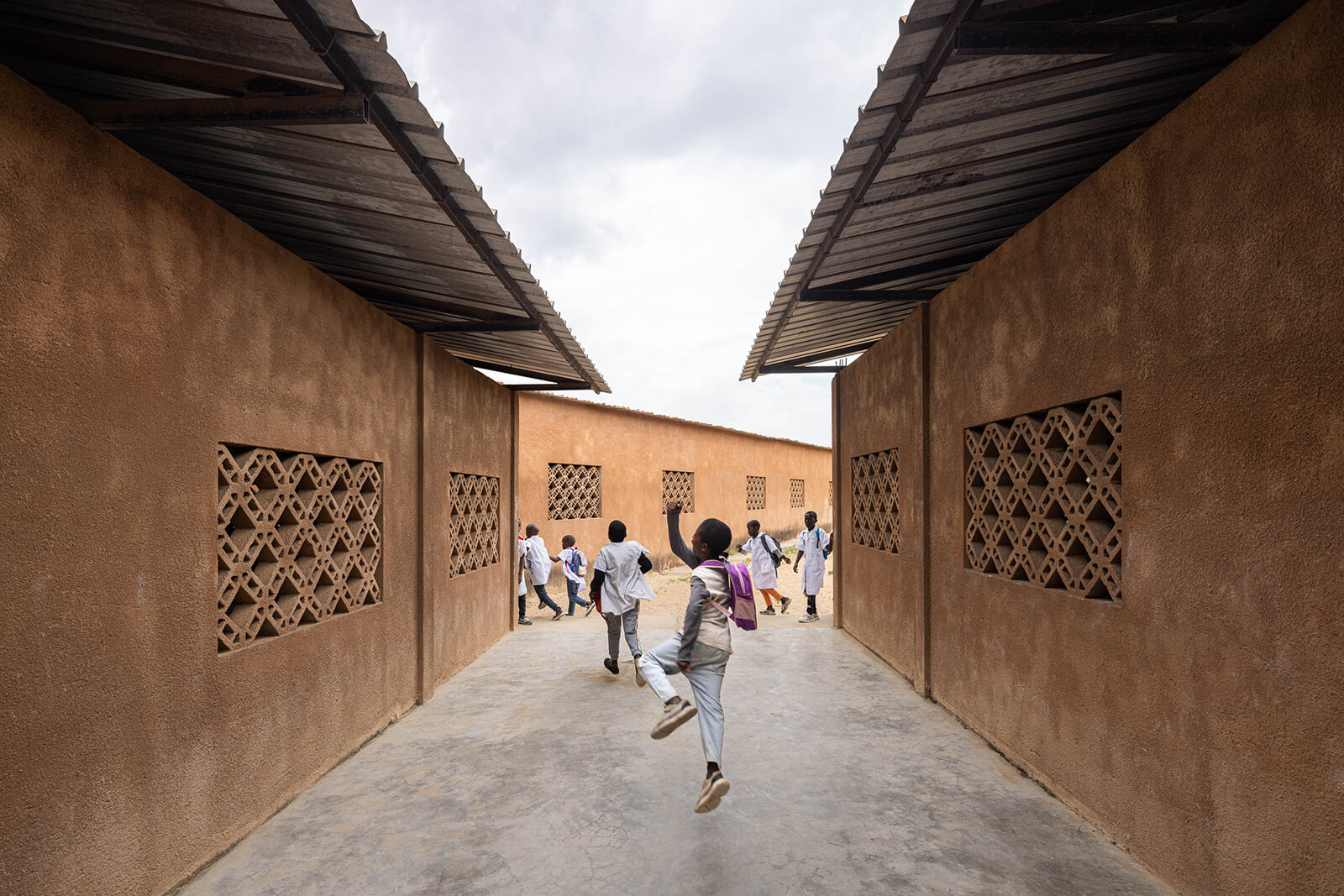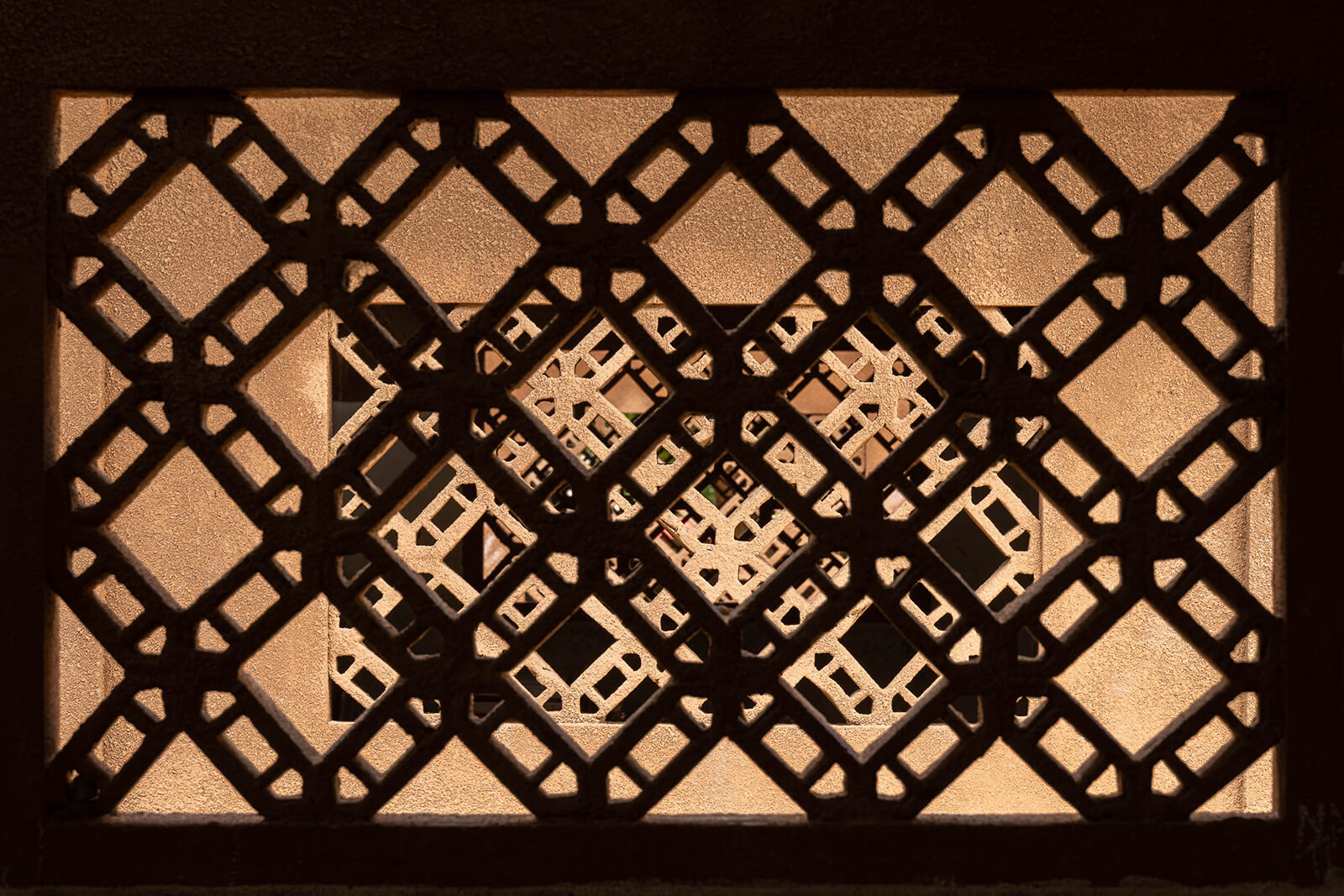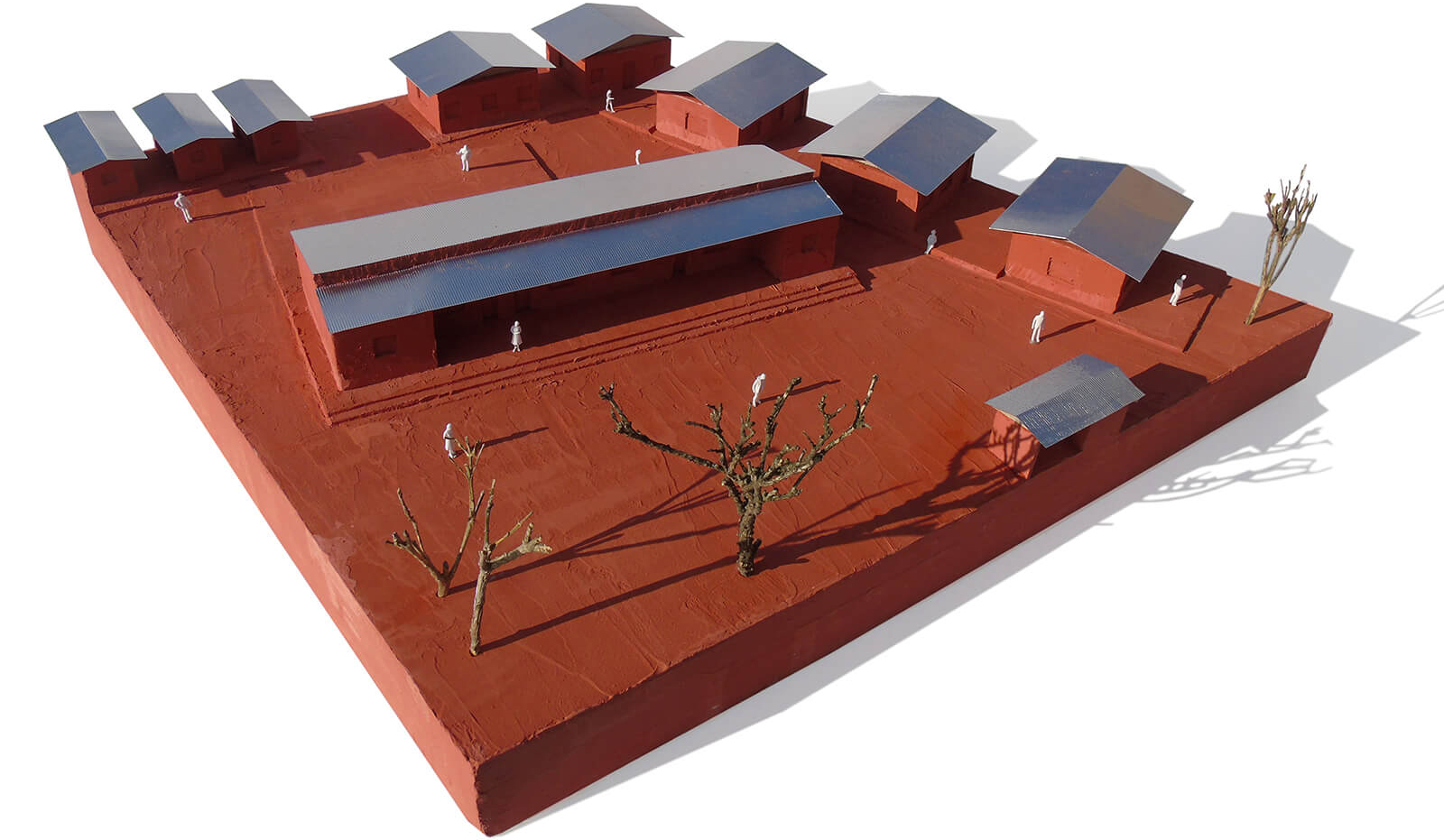Kapalanga School

This primary school is located in Kapalanga, an informal neighbourhood on the outskirts of Luanda, the capital of Angola. The project emerged from a prolonged period of community work involving local teachers, residents, students and an NGO. The project involves rehabilitating an existing school and building new classrooms, toilets and a perimeter fence. The new classrooms are independent volumes arranged along the south side of the site, allowing the new complex to blend into the existing built context.
Building techniques are simple and cheap, consisting of concrete frame structures and cement blocks for the walls, and steel structures and corrugated metal sheets for the roofs. These solutions proved to be suitable for local climate conditions, as well as economic constraints and cultural values. The new classrooms face the site’s prevailing winds, allowing them to flow through and around the classrooms. Natural light and ventilation are optimised, and the temperature is significantly lower inside the classrooms. Outdoor courtyards directly linked to each classroom are also created.

The building is made using local materials and manual labour. The walls are finished with a type of plaster made from cement mixed with reddish earth from the ground. Its materiality gives the school a textured appearance and creates a strong link between the various buildings, the ground and the surrounding area.
The existing building is located in the centre of the plot, and comprises a front porch, two small offices and three classrooms. The proposal consists of renovating these rooms and replacing one of the dividing walls with a movable wall, allowing two classrooms to be transformed into a single assembly hall, intended for student gatherings and community meetings.
The landscaping attempts to consolidate existing uses. The broad shadows of the trees growing in front of the school are used as gathering places. At the back, a flat cement surface provides a good place for children to play games in. The project includes new electricity, water and sanitation systems. New toilet facilities and a fountain in front of the main building contribute to making this a better environment for everyone.
project team: Paulo Moreira, PARQ Arquitectos (Pedro Nuno Ramalho, Luis Campos), Joana Venâncio, Sarah Biffa
client: APDES
builder: OMOD
engineer: Daniel Sousa
building supervision: Soapro
year: 2013-14
site area: 2,250 m2
building area: 560 m2
photos: Paulino Damião “Kota 50”
awards: Global Energy Award 2016 – Angola; Habitar Portugal 2015











